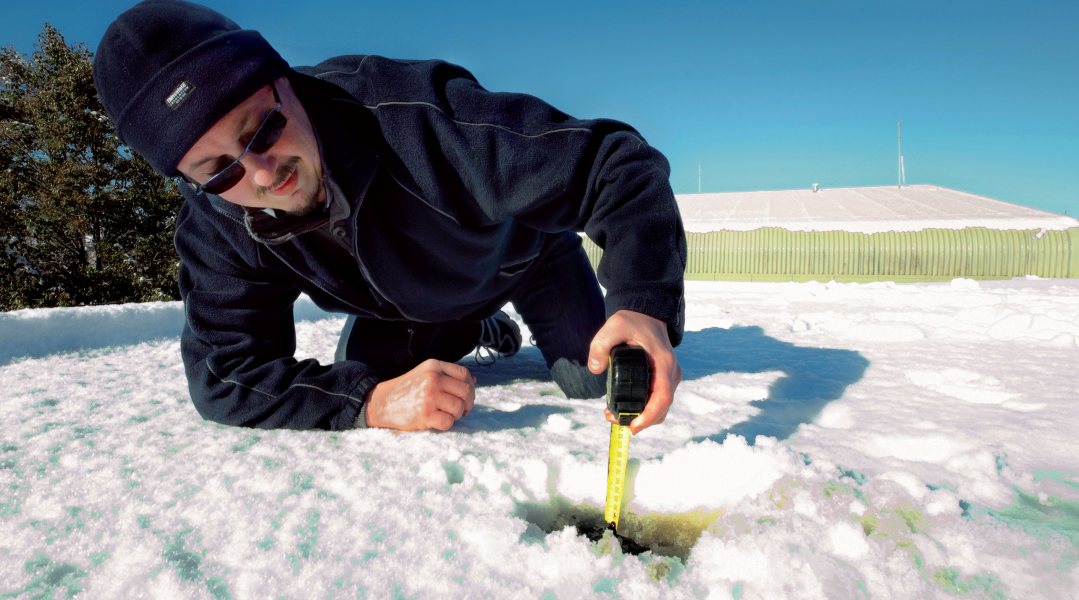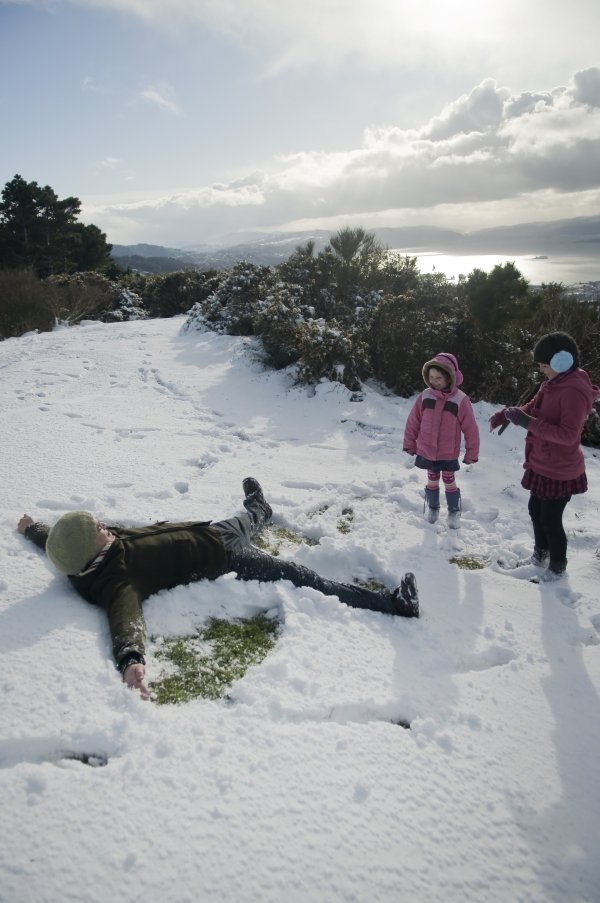Snowfall is not routinely measured in New Zealand, but is an important part both of our natural hazards and our water resources.
And so we'd like your help to measure snowfall. You can measure the snow depth after it snows and, if you're extra keen, measure the snow water equivalent (snow density) too.
Download the NIWA Citizen Science Snow Depth App
Citizen science projects allow members of the public to work on important scientific research. NIWA’s new Citizen Science App makes this easier than ever by enabling simple data entry for science surveys.
The app is available for iOS and Android operating systems and can be downloaded from:
Measuring snow (without the Snow Depth app)
Step by step instructions on how to measure snow if you don't have the NIWA Citizen Science Snow Depth App:
- Safety first. Do not make any measurements if it puts you or anyone else at risk. Data is valuable, but not that valuable. See the Civil Defence page on storms
- Measure the snow depth (in mm, please).
- Choose a location (for example, your lawn, or local park, etc). Choose somewhere typical; don’t just focus on deep snow or snow drifts. Record your location (street address or using GPS ifnromaiton from your mobile phone)
- Put a ruler vertically into the snow right down to ground level and record the snow depth in mm. Do this 10 times (if possible), each time at a different place in that location. If you cannot repeat the measurmeent 10 times
- Estimate how far apart these points are from one another: it could be just 10 metres or 100 metres. Don't make them further apart than that.
- Try to repeat measurements at the same places in your location, throughout the day during fine spells (not when it is snowing). Ideally, measurements should be repeated in the morning and the afternoon.
- If there are several days of snow, repeat these measurements at the same general location each day during fine spells, not when it’s snowing.
- Repeat these measurements at as many locations as you like, but keep your measurement records separated.
- Measure the snow water equivalent
- This measurement tells us how heavy the snow is, or its density. This is a very important parameter used to estimate snow loadings for buildings.
- Choose a location and measure the snow depth following the above instructions.
- Find an old saucepan (or similar cylinder) with straight sides, and measure its (inside) diameter and its height
- Press the upside-down saucepan vertically down into the snow until you reach the ground (snow may need to be compressed into the pan – that’s ok)
- Pick up the saucepan and most of the snow should come with it. Pick up any snow that falls out and put it in the pan.
- Slowly melt all the snow in the pan, and measure the volume of water (e.g. with a measuring jug). Take care not to boil off the water.
- Repeat this exercise as many times as you’d like at the same time snow depth measurements are taken, being sure to keep the results distinct.
- Record the time of measurement, depth of snow, the diameter of the container, and the volume of melted water. Also record the location (e.g., in my garden or in a park, post code 9999 or street address).
- Send us your measurements with the appropriate units. See 'Send us your measurements' below for more details
Working out snow density
If you'd like to know what the snow density is, the equations are shown below. Please note that they only work for cylindrical containers.
Snow volume (in mL*) = pi x ([Diameter in mm]/2)2 x [Depth in mm] / 1000
* mL = millilitres, or 1/1000 litres.
Snow density (in %) = 100 x [Volume of melted water in mL] / [Volume of snow in mL]
Example:
If snow depth = 180 mm, pan diameter = 200 mm, and the volume of melted water = 1620 mL,
then snow volume (mL) = 3.1416 x (200 / 2)2 x 180 / 1000 = 5655 mL.
Thus, snow density = 100 x 1620 / 5655 = 29%.
How to send us your measurements
Upload your measurements on this quick, easy form
or
use the snow depth app which is available for iOS and Android operating systems and can be downloaded from:



